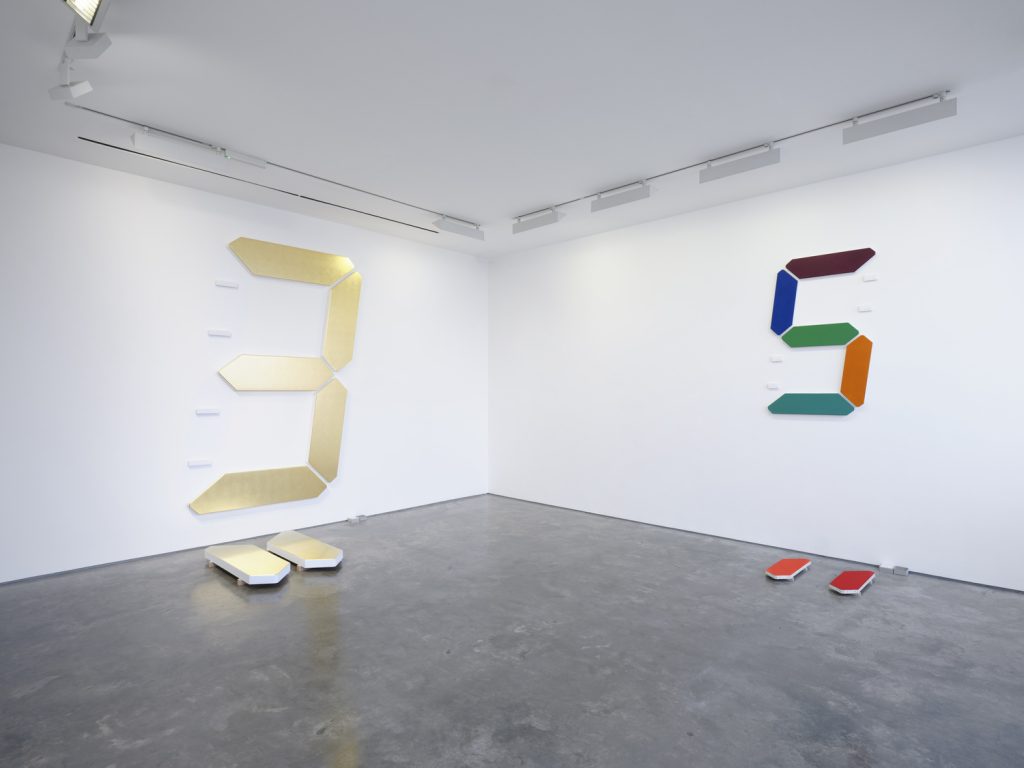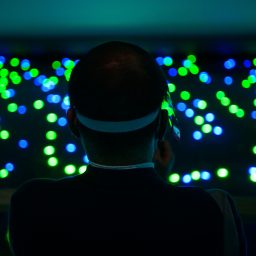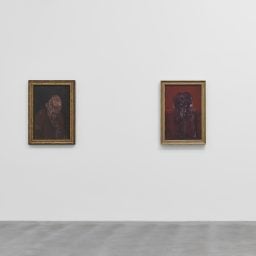Every month, hundreds of galleries add newly available works by thousands of artists to the Artnet Gallery Network—and every week, we shine a spotlight on one artist you should know. Check out what we have in store, and inquire for more with one simple click.
About the Artist: Japanese sculptor and installation artist Tatsuo Miyajima often works with numbers and LED lights to encapsulate ideas found in Buddhist thought. In his new exhibition “Art in You” at Lisson Gallery in London, the artist presents three new bodies of work, “Painting of Change,” “Keep Changing (Mondrian),” and “Unstable Time”—all created between 2020 and 2021 and on view for the first time.
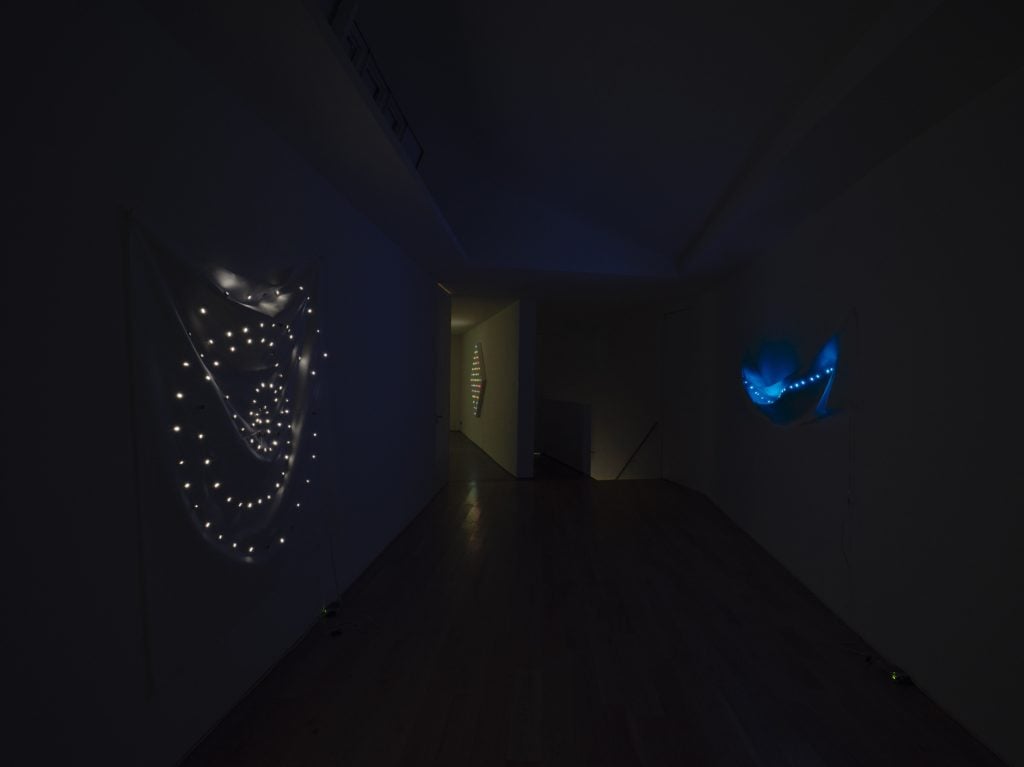
Installation view “Tatsuo Miyajima: Art in You” 2022. Courtesy of Lisson Gallery, London.
Why We Like It: Miyajima’s “Painting of Change” series includes new works that feature large digits—forms that call to mind LED alarm clocks, as well as the passing of time. These works can be activated by the roll of a die, a device that alludes to questions of chance, Buddhist teachings on the continuity of flux, and the artist’s belief in the always-changing nature of life. New for the artist are a series of sculptures made from fabric and LED lights, called the “Unstable Time” series, which add a new sense of ephemerality and fluidity to his practice. In the last room of the gallery, viewers come across a new series of LED installations on panels arranged in checkered patterns, which are part of Miyajima’s “Keep Changing (Mondrian)” series. All of the works in the exhibition place emphasis on the numbers, which in Miyajima’s symbolic language, symbolize the human life cycle, each digit individually signifying a body and soul. Numbers, for Miyajima, are an international language that traverses cultural boundaries and his works often count down from nine to one. The artist, however, always omits zero, instead replacing the number with a pause that represents the space between life and death, before the cycle of flickering numbers begins again. Colors too have symbolism in this exhibition. In the “Keep Changing (Mondrian)” series, the colors green, blue, red, yellow, and white symbolize earth, water, fire, wind, and sky, embodying the “Five Elements.”
According to the Gallery: “For Buddhists, nothing is constant or fixed but rather in flux, a perpetual stream of change, of re-birth or Saṃsāra—the cyclicality of all existence. The introduction of the die also engages with the paradox between the certainty of the object, undermined by its fate controlled by the indeterminate roll of the dice… Miyajima was also inspired by John Cage’s Music of Changes: a ground-breaking piano solo composed in 1951, described as ‘indeterminate music’, where the process of composition involved applying decisions made using the I Ching, a Chinese classic text that is commonly used as a divination system.”
See images from “Tatsuo Miyajima: Art in You” below.
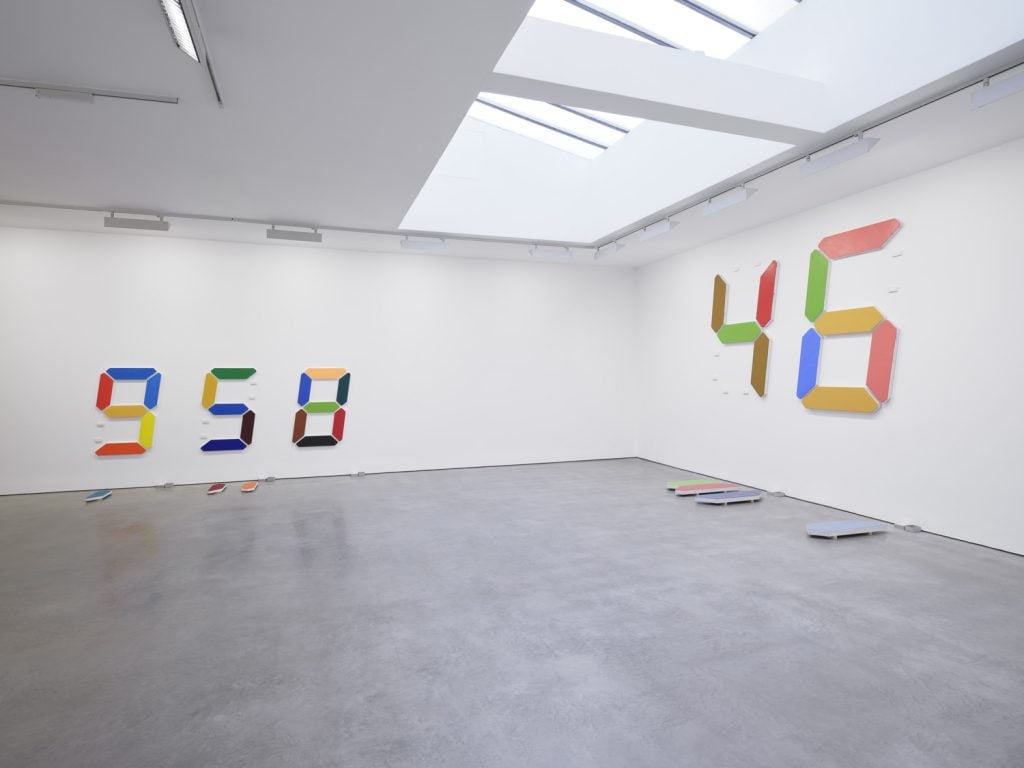
Installation view “Tatsuo Miyajima: Art in You” 2022. Courtesy of Lisson Gallery, London.
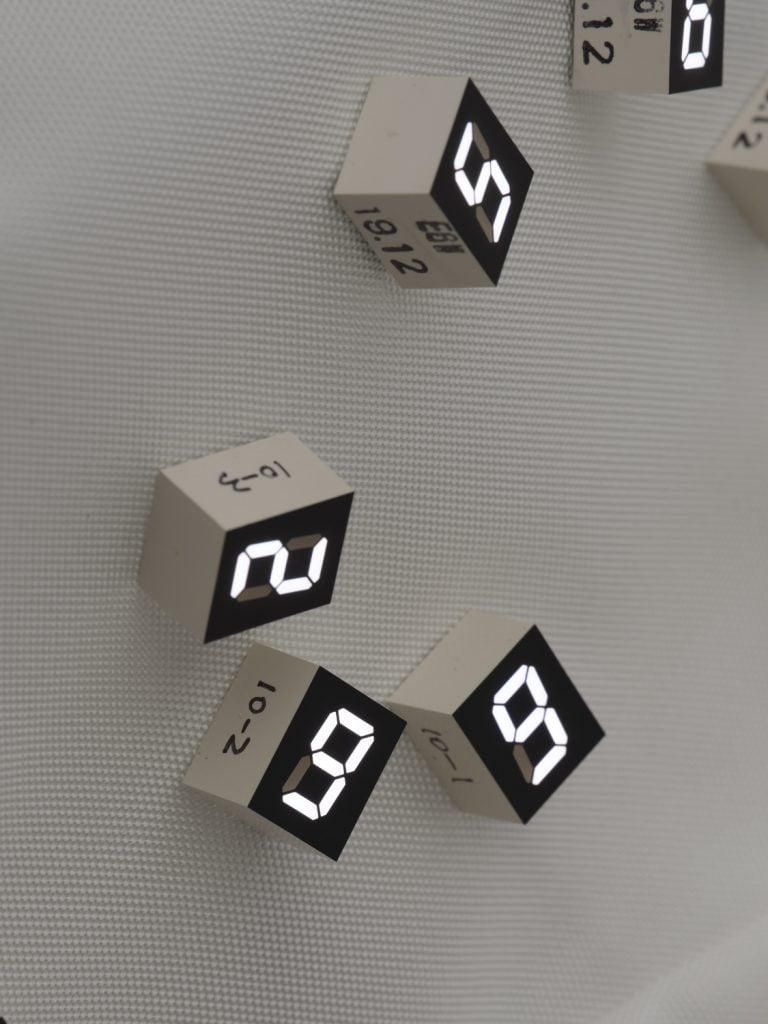
Installation view “Tatsuo Miyajima: Art in You” 2022. Courtesy of Lisson Gallery, London.
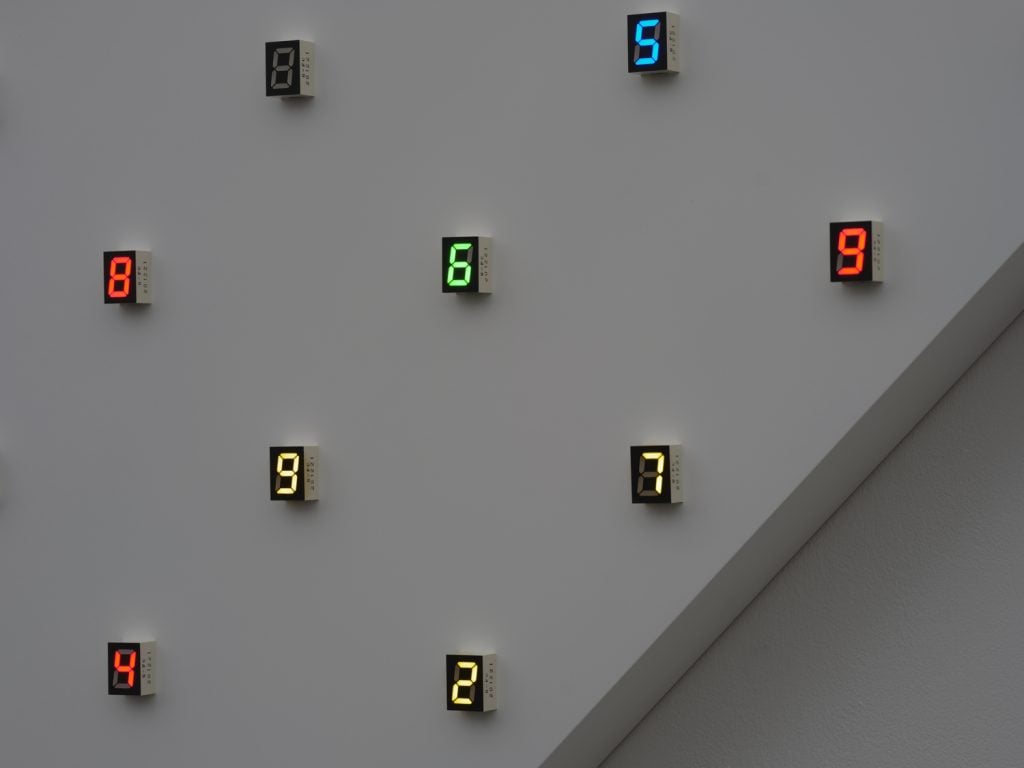
Installation view “Tatsuo Miyajima: Art in You” 2022. Courtesy of Lisson Gallery, London.
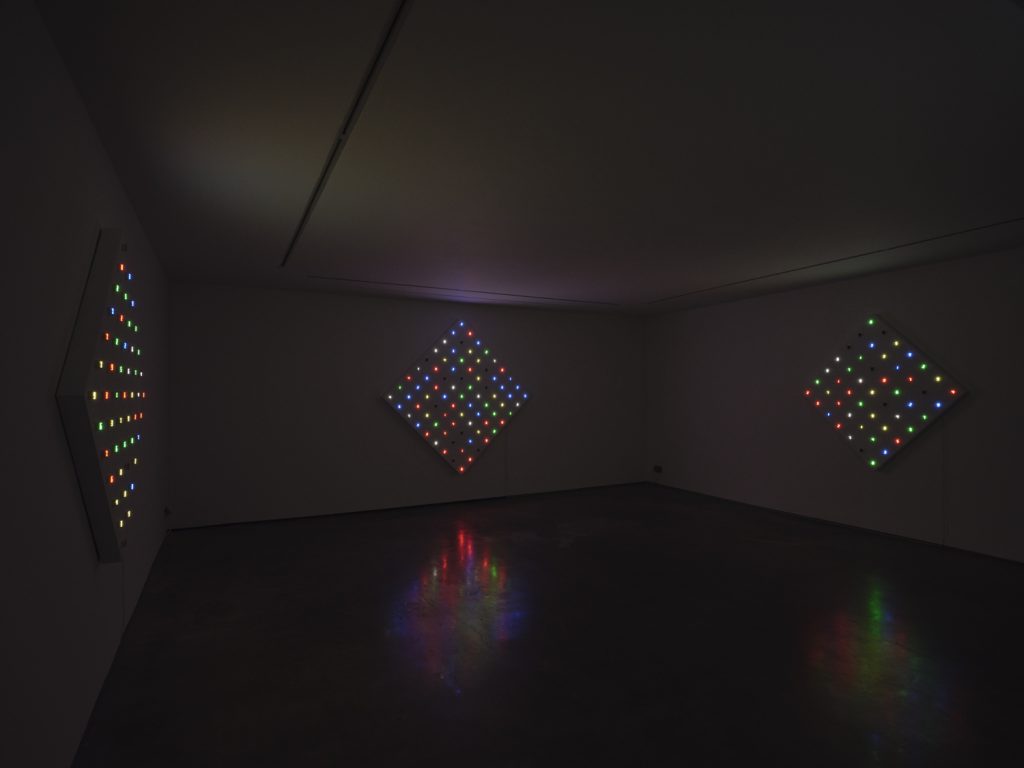
Installation view “Tatsuo Miyajima: Art in You” 2022. Courtesy of Lisson Gallery, London.
“Tatsuo Miyajima: Art in You” is on view a Lisson Gallery, London, through April 9, 2022.
